Table of Contents
Remembering Joe Pass, genius guitar player (1929-1994)
Joe Pass – “Ain’t Misbehavin”
Joe Pass – Summertime (1992) by George Gershwin
Best Sheet Music download from our Library.
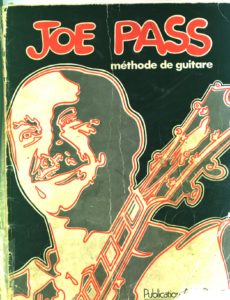
Jazz sheet music download.
Please, subscribe to our Library.
If you are already a subscriber, please, check our NEW SCORES’ page every month for new sheet music. THANK YOU!
Joe Pass (short biography)
Joseph Passalaqua, real name of the guitarist, Joe Pass, (New Brunswick, January 13, 1929 – Los Angeles, May 23, 1994), studied guitar in his hometown, Brunswick, in the late 1930s to later join from different bands, including Tony Pastor’s, while he was still at the Institute.
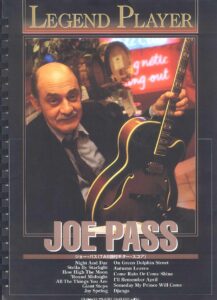
In 1947, already with his professional name, he achieved his musical consecration in Charlie Barnet’s orchestra, but his drug addiction, acquired while doing military service, meant that the decade of the fifties went unnoticed musically speaking, since he used his time alternating various jobs and stays in various medical institutions in order to detoxify.
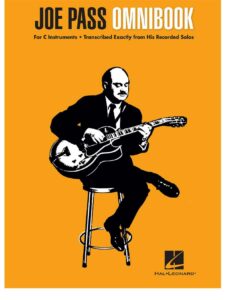
In 1961, Joe Pass voluntarily entered the “Synanon Foundatuion”, a rehabilitation center in Santa Monica, which managed to break his drug habit. It was practically leaving that center and recording an extraordinary album for Pacific Jazz, titled “The Sounds of Synanon” in which he had a starring role. It was his first album and even then, the specialized magazine Down Beat gave it a rating of 4 and a half stars. In 1970, he recorded an album again, this time for the MPS label, and two years later, he formed a guitar duo with Herb Ellis, recording some interesting albums.
In 1973, producer Norman Granz, then owner of the Pablo label, convinced him to participate in a very long series of tours, increasing his fame as an extraordinary guitarist as the public began to know him. He participated in numerous jazz festivals in Monterey, Newport, Concord, etc. and his name always appeared among the top guitarists in specialized magazines.
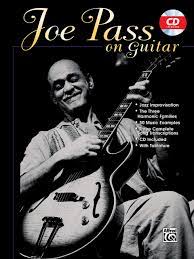
During the 1980s, Pass emerged from his role as a sideman star to begin a period of his career leading his own group, and recording and performing in virtually every situation imaginable, from solo guitar to any combination of small groups. Among his very extensive discography to his name, it is worth highlighting the albums recorded in 1973 for JVC (Virtuoso), in 1974 for Pablo (Portrait of Duke Ellington); with Ella Fitzgerald (Fitzgerald and Pass Again, or Ella in London), or in 1992 (Finally: Live in Stockholm). Joe Pass maintained a loyal following of his music until the day of his death in 1994.
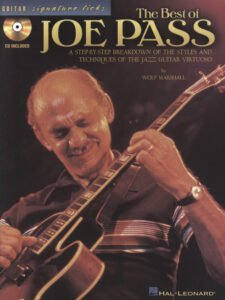
Joe Passs technique
Pass’s playing style was particularly noted for his ability to simultaneously play melody, harmony and basslines at extremely high tempos. Joe Pass’s single-note playing style is similar to the instrumental stylings of classic bebop and hard bop, drawing comparisons to the tones and timbres of wind instruments used in jazz music, such as the saxophone and trumpet, as well as other string instruments such as the piano. Jazz educator Wolf Marshall said Joe Pass’s musical flavorings were “hornlike and on par with his wealth of ideas and immense vocabulary, allowing single-note improvisations to flow like a saxophonist’s stream of consciousness.”
As Pass’s career progressed, he developed an increasingly harmonic approach to improvisation that made extensive use of chord-melody solos, which produced a similar effect to that of a piano. He also employed a variety of different picking techniques such as fingerpicking, hybrid picking and “flat picking”.
Pass’s style was also said to have exhibited a “tougher funky aspect” by incorporating string bends, double stops and partial chords that variously borrow from blues, R&B and swing styles.
Influences
InfluencesThroughout the 1940s, Pass became interested in modern jazz sounds that were emerging from New York City, where would jam with many quintessential bebop musicians. Pass cited Dizzy Gillespie, Charlie Parker, Art Tatum and Coleman Hawkins as influences during this time. Pass was later influenced by the piano stylings of Oscar Peterson. Ironically, only three of the various jazz musicians he had cited as influences on his playing were actually guitarists; he cited Charlie Christian, Django Reinhardt and Wes Montgomery as instrumental in his development as a musician.
EquipmentOn Pass’s early recordings, he played Fender solid-body electric guitars, such as the Jaguar and Jazzmaster. Additionally, Pass experimented with a Fender Bass VI 6-string bass on his 1963 album Catch Me.
In 1963, Joe Pass was gifted a Gibson ES175D arch-top electric-acoustic guitar that had twin humbucking pickups.
Joe Pass discography
Browse in the Library:
Or browse in the categories menus & download the Library Catalog PDF:
